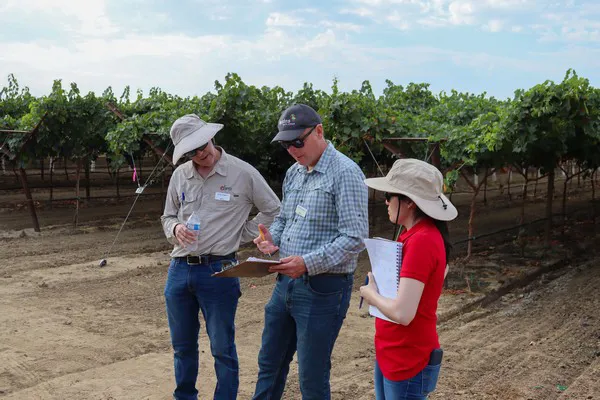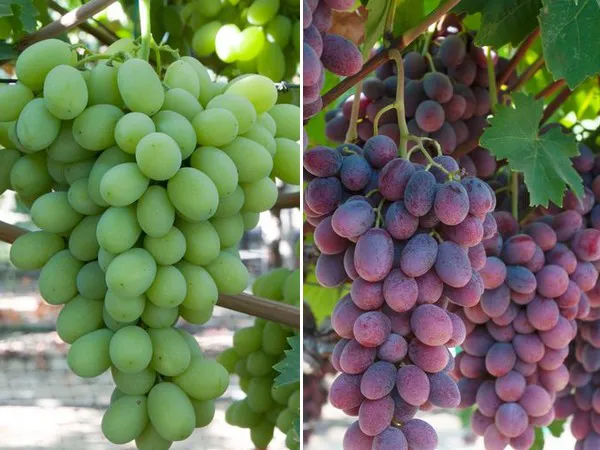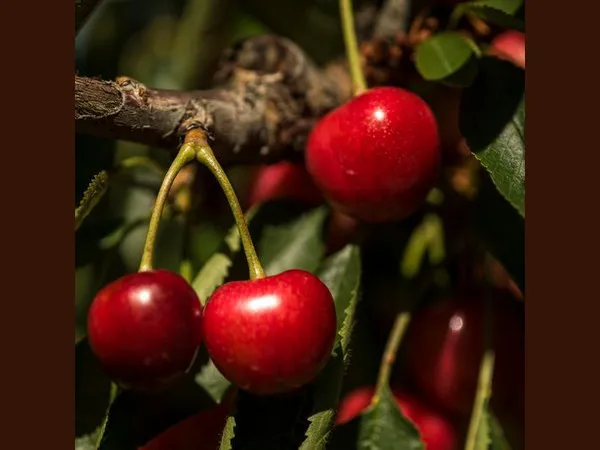 Fruit breeding has a long generation time as it takes years to develop a new table grape or cherry variety. As a result, global warming is a significant concern to factor in and one that impacts all regions in the world. “Due to the long propagation time, we need to predict 10 to 20 years in the future,” says Chris Owens, Lead Breeder at IFG. The company mainly breeds table grape and cherry varieties, but how to develop varieties that can withstand climate changes? It’s a much-talked-about subject that gets even more attention as Earth Day on April 22 is nearing.
Fruit breeding has a long generation time as it takes years to develop a new table grape or cherry variety. As a result, global warming is a significant concern to factor in and one that impacts all regions in the world. “Due to the long propagation time, we need to predict 10 to 20 years in the future,” says Chris Owens, Lead Breeder at IFG. The company mainly breeds table grape and cherry varieties, but how to develop varieties that can withstand climate changes? It’s a much-talked-about subject that gets even more attention as Earth Day on April 22 is nearing.
Higher summer temperatures
Warmer temperatures are just one of the consequences of global warming. “We need table grape and cherry varieties that are heat tolerant,” said Owens. On a positive note, IFG is headquartered in Bakersfield, in California’s Central Valley. It’s a very hot and dry area and this is where the breeding process starts. Table grapes generally like hot weather and it is no coincidence that the Central Valley is the world’s third largest grower of table grapes.
“In terms of temperature, we are located in a perfect spot for table grape breeding,” commented Owens. Although table grapes thrive in hot weather, when it gets too warm, problems start occurring with the clusters. “Sometimes, a cluster stops growing or individual pieces of fruit within a cluster stay hard and green,” said Owens. “These types of damages are all heat responses.” High temperatures are also an issue for cherries. With cherries, the impact of a hot summer usually shows the next season. “A hot summer affects flower buds the following season, resulting in doubling.” IFG is breeding varieties that are resistant to doubling.
 Chris Owens with colleagues in the field.
Chris Owens with colleagues in the field.
Warmer winters
In addition to higher summer temperatures, warmer winters are also an effect of global warming. “Within the cherry segment, we try to breed for varieties that don’t need as many chill hours and I think we probably have the best low-chill program of all breeders around the globe,” said Owens. “Many breeders are in a more traditional growing region, but our cherries are developed in a pretty extreme and hot climate,” he added.
Volatile weather patterns
“Not only are we dealing with hotter summers and warmer winters, but the weather is also getting more variable,” added Owens. Unpredictable rain events increasingly occur in traditional warm table grape growing regions and a present example is the excessive amount of rainfall the state of California has seen this past winter. “Generally, cherries are susceptible to rainfall, especially closer to harvest as rain results in cracking of the fruit.” For both table grapes and cherries, IFG works on developing varieties that are crack tolerant.
“We try to include all these traits in one variety,” mentioned Owens. “Resistance to doubling and tolerance to cracking, but from a consumer perspective, fruit needs to be exciting and create a flavor revolution. Taste, color, size, firmness, shape all matter and it is an exciting challenge to simultaneously bring all of this forward.”
New varieties
When it comes to table grapes, all varieties are susceptible to heat damage, but IFG’s breeding has allowed for new areas where table grapes can be successfully grown. Varieties are expanding into regions where temperatures are good for growing, but rainfall often occurs during the ripening stages. IFG table grape varieties like Sugar Crisp™, Sweet Celebration™, Candy Crunch™ and Rugby™ are more tolerant to late rains and humidity, presenting new opportunities for growers. Pictured are Sugar Crisp™ and Rugby™.
 Sugar Crisp™ and Rugby™ varieties.
Sugar Crisp™ and Rugby™ varieties.
Examples of low-chill cherry varieties include Cheery Cupid™, Cheery Crunch™, and Cherry Nebula™. All varieties can be harvested early and require less than 300 chill hours. Cheery Crunch™ (pictured) is very early and approximately seven to ten days ahead of Brooks.
 Cheery Crunch™ cherry variety.
Cheery Crunch™ cherry variety.
 For more information:
For more information:
Chris Owens
IFG
cowens@ifg.world
www.ifg.world
